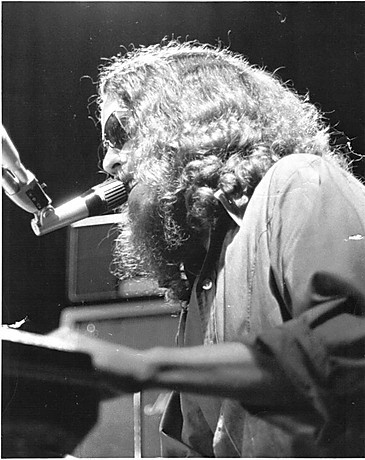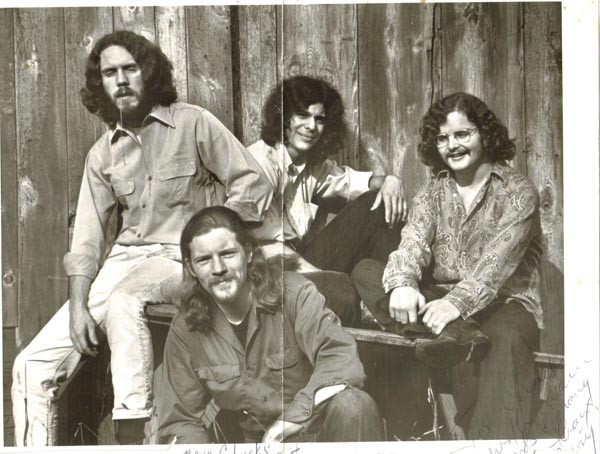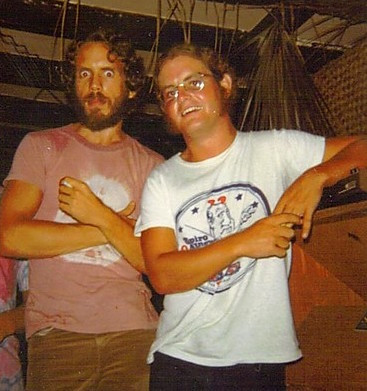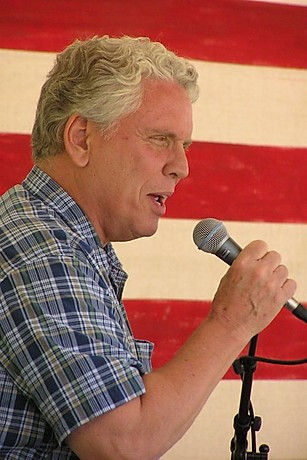“Dancing in the Moonlight” is more than just a feel-good tune from the 1970s; it’s a song born from an unexpected and deeply personal experience. Originally penned by Sherman Kelly, this iconic track has journeyed through various artists, including King Harvest, Orleans, and Toploader, each adding their flavor to its enduring charm. But the genesis of this beloved song is a story of resilience, imagination, and the power of music to transform hardship into joy.
 Sherman Kelly onstage in the 1970s.
Sherman Kelly onstage in the 1970s.
From Beach Trauma to Timeless Tune: The Serendipitous Origin of “Dancing in the Moonlight”
The year was 1969, and Sherman Kelly found himself running a nightclub in the Virgin Islands. A seemingly idyllic day trip to St. Croix took a dark turn when Kelly and his girlfriend were struck by severe seasickness. Seeking refuge from the swaying yacht, they decided to spend the night in town. However, a series of unfortunate events left Kelly without his wallet and at the mercy of an innkeeper with predatory intentions. Finding themselves turned away from lodging, they sought solace on a St. Croix beach, a decision that would alter Kelly’s life and unexpectedly inspire one of the most uplifting songs of a generation.
Sleeping under the stars turned into a nightmare. Kelly and his girlfriend became victims of a brutal attack by a local gang. Severely beaten and left for dead, Kelly recounts waking up in a hospital to grim pronouncements about his survival. This traumatic experience, however, became the unlikely catalyst for “Dancing in the Moonlight.” During his painful recovery, Kelly envisioned an “alternate reality,” a peaceful and joyous escape from the violence he had endured. This vision of tranquility and celebration became the lyrical foundation for his burgeoning song. “It was just me imagining a better world than the one I had just experienced in St. Croix,” Kelly explained, highlighting the song’s roots in seeking light amidst darkness.
 King Harvest in 1972.
King Harvest in 1972.
Early Versions and Boffalongo’s Rendition: Honing the Moonlight Dance Song
Before King Harvest’s chart-topping success, “Dancing in the Moonlight” had earlier iterations. In 1970, Kelly joined Boffalongo, a band featuring his brother Wells Kelly and future Orleans member Larry Hoppen. Boffalongo recorded the song for their album “Beyond Your Head,” marking the first official release of “Dancing in the Moonlight.” However, Kelly candidly admits his vocal performance on this version was far from ideal, humorously attributing it to misguided studio decisions. Despite Kelly’s self-critique, Boffalongo’s version gained regional traction, demonstrating the song’s inherent appeal even in its nascent form. Another group, High Broom, also recorded the song in 1970, further indicating its burgeoning potential.
 Boffalongo, circa 1970.
Boffalongo, circa 1970.
King Harvest’s Chart-Topping Success: “Dancing in the Moonlight” Reaches the Masses
The song’s breakthrough moment arrived when Wells Kelly, after Boffalongo disbanded, joined King Harvest. He introduced “Dancing in the Moonlight” to the band, and it resonated deeply. With Doc Robinson on lead vocals, King Harvest’s rendition captured a polished and radio-ready sound. Released in 1972, it soared up the charts, reaching No. 10 on the Cash Box Top 100 and No. 13 on the Billboard Hot 100. This success propelled “Dancing in the Moonlight” into the national spotlight, firmly establishing it as a 70s classic. Sherman Kelly even toured with King Harvest during this period, witnessing firsthand the song’s widespread popularity, although he humorously acknowledged Robinson’s superior vocal delivery.
Orleans and the Enduring Legacy: The Moonlight Dance Continues
The story of “Dancing in the Moonlight” doesn’t end with King Harvest. Wells Kelly later co-founded Orleans with Larry Hoppen, and naturally, “Dancing in the Moonlight” became part of their repertoire. Orleans’ continued performances kept the song alive for new audiences. Decades later, in 2000, Toploader’s cover version reintroduced the song to a new generation, achieving international success and further cementing its timeless status. “Dancing in the Moonlight” has also graced numerous films and television shows, and even video games, ensuring its continued presence in popular culture. From “Guardians of the Galaxy” to everyday playlists, the song’s uplifting message and infectious rhythm continue to resonate.
 Sherman Kelly, left, and Larry Hoppen, who would go on to form the band Orleans.
Sherman Kelly, left, and Larry Hoppen, who would go on to form the band Orleans.
Sherman Kelly’s Life Beyond the Moonlight: From Music to Psychotherapy and Back
While “Dancing in the Moonlight” remains Sherman Kelly’s most famous creation, his life journey extends far beyond its success. Educated at Cornell University and with further studies in Paris and Switzerland, Kelly initially pursued academia before fully immersing himself in music. Following the tragic loss of his brother Wells, he shifted gears, earning a master’s degree in social work and dedicating years to psychotherapy. However, the pull of music remained. In 2008, he released “Burnin’ the Candle,” an album featuring collaborations with his late brother, demonstrating his enduring connection to songwriting.
 Sherman Kelly today.
Sherman Kelly today.
In conclusion, “Dancing in the Moonlight” is a testament to the transformative power of music. Born from personal trauma, it evolved into an anthem of joy and escapism, embraced by generations through various artists and interpretations. Sherman Kelly’s story reminds us that even from the darkest experiences, enduring beauty and light can emerge, inviting us all to dance in the moonlight.

